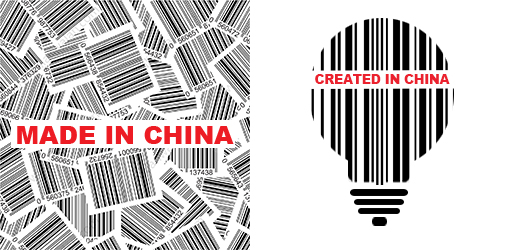From Made in China to Created in China
Posted on October 26, 2012 | posted by:
How to combine the essence in China’s traditional culture and modern design so as to realize the strategic conversion of sustainable development?
China at present is in the period of the accelerating industrialization development. Low cost and price were the competitive advantage of China’s manufacturing industry in the international market, and at that time the volume of China’s main industrial products tops ranked the first and was regarded as the World Processing Factory. However, China’s manufacturing industry has been in the lower reaches with poorer added value, with fewer products guaranteed with autonomous intellectual property and inferior international competitiveness. IN the context of economical globalization, such features are easily to be affected by international financial Crisis. In addition, it is shown in the UN’s population predictive report that people at their labor ages from 15 to 64 will have decreased annually after reaching the peak since 2015; therefore the strong point of cheap labor force will be weakened rapidly. Consequently, traditional extensive economic developing modes have already been hard to be continued. From the perspective of sustainable development, China’s manufacturing industry must experience the strategic conversion from Made in China to Created in China.
Extracting craftsmanship from China’s traditional culture and globalizing brands are the feasible ways of strategic conversion. There are thousands of brands inside China but fewer have been developed into the whole world. Chinese people seem to be more satisfied with assembling others’ products instead of creating our own brands. For instance, Chinese enterprises get small profits from processing work for the Apple and most of the profits are taken by the brand company itself. However, the label of “Made in China” is everywhere in US,consumers consider them as “low quality, high quantity”. The question is “How to change this reputation” and switch “Made in China” to an alternative for graceful taste and amazing quality,like Christian Dior made in France,Mercedes-Benz made in German. Obviously, design is crucial in sustainable development. For example, the Apple’s sales performance was revived by particular products with industrial design as their core concept. Accordingly,industrial design plays a significant role in maintaining competitive advantage in the modernize world. China has profound culture and excellent traditional craftsmanship, and no matter visible materialist forms or invisible spiritual culture may be taken as references in design resources. The auto master Fabrizio Giugiaro ever said: “The connotation of design is culture”. Chinese designers should combine the essence in China’s traditional culture and modern design and integrate into products design. Nevertheless, national elements rote is artificial while superficial patterns and signs are unable to completely convey the profound traditional culture, which makes the public talks about dragon, Peking Opera, facial makeup in opera and Kongfu when thinks of Chinese elements. Characteristics of Chinese traditional culture should be deeply explored with products’ features and functions, and essence as well as core culture may be extracted for creation later.
The application of intellectual property rights serves as a sound environment and a protection for originality. Though copying is studying before creating, nonetheless, shortcuts of copycat in pursuit of economic profits is not only an infringement of intellectual property rights, but also a destruction of fair competition in positive economy development. Hence China must protect intellectual property rights with laws and policies when cultivate innovation spirit as well as encouraging renovation and reform in all fields.
It is concluded that the necessity of switching from Made in China to Created in China is quite evident and obvious. This brings into how it can be achieved. In short, Chinese characterized elements should be introduced into modern design of manufacturing industry, meanwhile intellectual property rights must be guaranteed by laws and regulations as well as policies, otherwise pointless copycat will definitely ruin the essence of originality and innovation.
